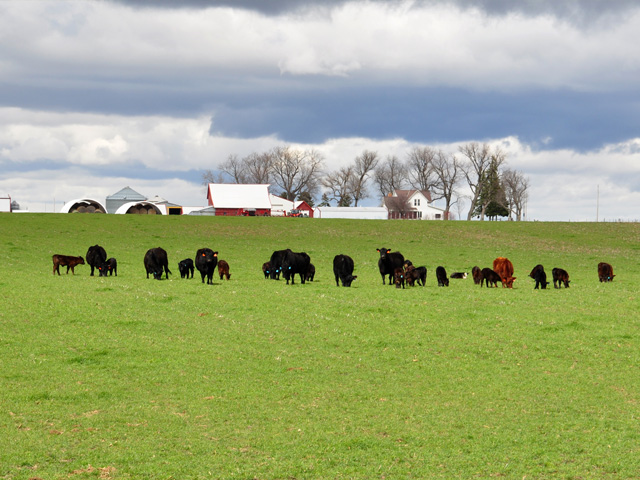Management Options
Outsourcing Heifer Development a Learning Opportunity
Most cattle producers would agree developing replacement heifers is challenging. Outsourcing heifer development is one option with returns that extend beyond the financial side of the business.
Landon Marks, Alabama Extension animal sciences and forages regional agent, says nominations are being accepted for the sixth group of heifers to take part in the Sand Mountain Elite Heifer Development Program. While the Auburn University Extension program prioritizes Alabama producers, cattle from other states are also accepted up to the 60-head total program limit.
Heifers here are developed on cool-season annuals, weighed every 28 days, artificially inseminated in April, scanned for carcass merit using ultrasound, and ready to pick up at the end of June. Participants in the program are able to preserve forage resources to help keep mature cows in good body condition, and when forages are plentiful, to possibly feed out some steers at home.
P[L1] D[0x0] M[300x250] OOP[F] ADUNIT[] T[]
Marks says one of the biggest advantages producers tell him they gain from taking part in the program, is the ability to see data showing them what their herd is producing in terms of carcass quality.
"The data gives people the ability to make different decisions sometimes regarding their bull power, as well as their marketing of steer-mates," said Marks. "Where they didn't have a great idea of the carcass value coming out of their breeding program, they get to see what they're really producing. That's our biggest success story, because it encourages them to step out and consider other marketing options. Many of them just didn't realize what they had when they took those steers to the sale barn."
Data provided from the program includes not just carcass data, but reproductive tract scores, growth performance, pelvic measurements and temperament scoring.
To participate in the program, heifers have to be 10 months of age at delivery, have a known breed composition and a registration number on their sire. Weights at delivery are around 525 pounds. Heifers must be preconditioned, structurally sound, have a calm disposition, and be of excellent quality.
Marks adds one of the great things about the program is that the concepts can be taken and used by producers in their own operations.
"Ultimately we are demonstrating herd development. We want these producers to be able to go back and use this knowledge to improve genetics and management in their herds. We want to help producers maximize what they've got and know what they are marketing."
Fee for the development program is $400 per head. Deadline to submit an application is November 30th. To submit applications or learn more about the program go to https://www.aces.edu/…
(c) Copyright 2020 DTN, LLC. All rights reserved.






